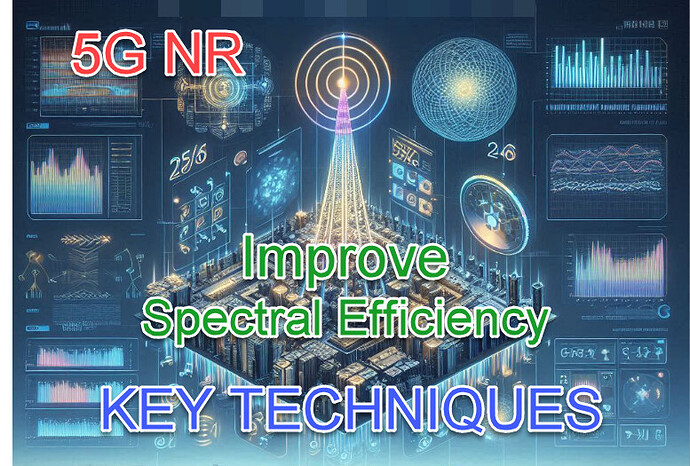To make spectral efficiency in a 5G Radio Access Network (RAN) more effective, several key techniques and technologies can be employed:
-
Advanced Modulation and Coding Schemes:
- Higher-order Modulation: Use of higher-order modulation schemes like 256-QAM (Quadrature Amplitude Modulation) increases the data rate by encoding more bits per symbol.
- Advanced Coding Techniques: Implementing advanced coding schemes such as LDPC (Low-Density Parity-Check) and Polar Codes to improve error correction efficiency.
-
Massive MIMO (Multiple Input Multiple Output):
- Beamforming: Utilizes multiple antennas to focus signal energy towards specific users, reducing interference and improving signal strength.
- Spatial Multiplexing: Allows multiple data streams to be transmitted simultaneously over the same frequency band.
-
Network Densification:
- Small Cells: Deployment of small cells (e.g., micro, pico, and femtocells) to increase the overall network capacity and reduce the load on macro cells.
- Distributed Antenna Systems (DAS): Use of DAS to improve coverage and capacity by distributing antenna elements over a wide area.
-
Carrier Aggregation:
- Combining multiple frequency bands to increase the total available bandwidth, enhancing throughput and spectral efficiency.
-
Dynamic Spectrum Sharing:
- Spectrum Re-farming: Reallocating spectrum from older technologies (e.g., 2G, 3G) to 5G.
- Licensed and Unlicensed Spectrum: Utilizing both licensed and unlicensed spectrum to maximize available bandwidth.
-
Network Slicing:
- Creating virtualized network slices tailored for specific applications or services, allowing for more efficient use of the spectrum based on the specific requirements of each slice.
-
Advanced Radio Resource Management (RRM):
- Efficiently managing and allocating radio resources (e.g., frequency, time, power) based on real-time network conditions and user requirements.
-
Interference Management:
- Coordinated Multi-Point (CoMP): Techniques that allow multiple base stations to coordinate their transmission and reception to minimize interference and improve signal quality.
- Inter-cell Interference Coordination (ICIC): Strategies to reduce interference between neighboring cells.
-
Use of mmWave (Millimeter Wave) Frequencies:
- Utilizing mmWave frequencies (e.g., 24 GHz and above) which offer large bandwidths and can significantly increase data rates.
-
Artificial Intelligence and Machine Learning:
- Applying AI and ML techniques for predictive analytics and optimization of network resources, improving efficiency in real-time.
By integrating these techniques, 5G networks can achieve higher spectral efficiency, resulting in better utilization of available spectrum and improved overall network performance.
Source: ![]()
